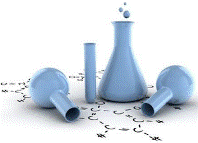Chemical and Biomolecular Engineering, Department of
Date of this Version
5-6-2021
Document Type
Article
Citation
Angew. Chem. Int. Ed. 2021, 60, 13343– 13349 doi.org/10.1002/anie.202100337
Abstract
Extensive research efforts are currently dedicated to the search for new electrocatalyst materials in which expensive and rare noble metals are replaced with cheaper and more abundant transition metals. Recently, numerous alloys, oxides, and composites with such metals have been identified as highly active electrocatalysts through the use of high-throughput screening methods with the help of activity descriptors. Up to this point, stability has lacked such descriptors. Hence, we elucidate the role of intrinsic metal/oxide properties on the corrosion behavior of representative 3d, 4d, and 5d transition metals. Electrochemical dissolution of nine transition metals is quantified using online inductively coupled plasma mass spectrometry (ICP-MS). Based on the obtained dissolution data in alkaline and acidic media, we establish clear periodic correlations between the amount of dissolved metal, the cohesive energy of the metal atoms (Ecoh), and the energy of oxygen adsorption on the metal (DHO,ads). Such correlations can support the knowledge-driven search for more stable electrocatalysts.



Comments
CC-BY-NC